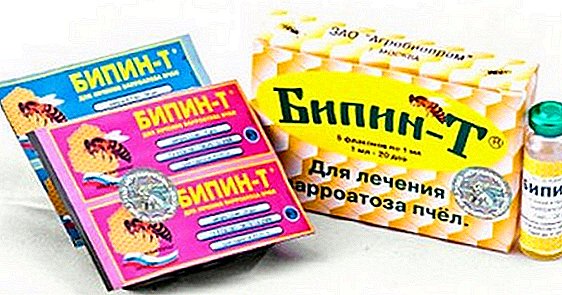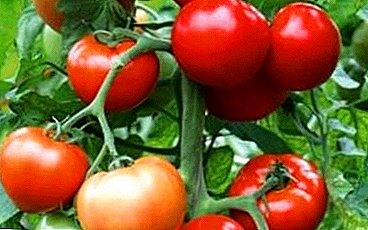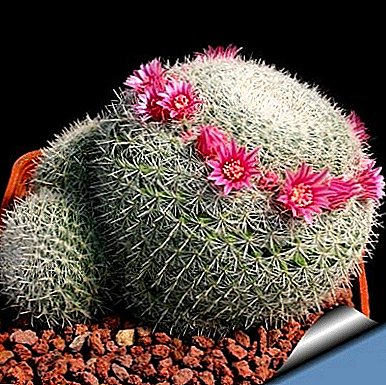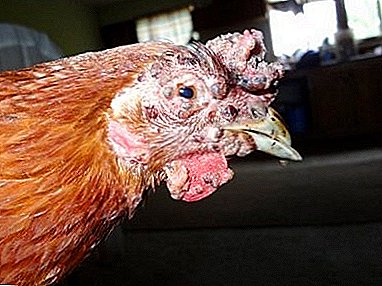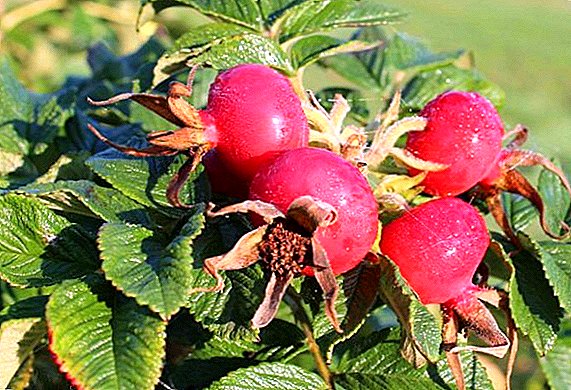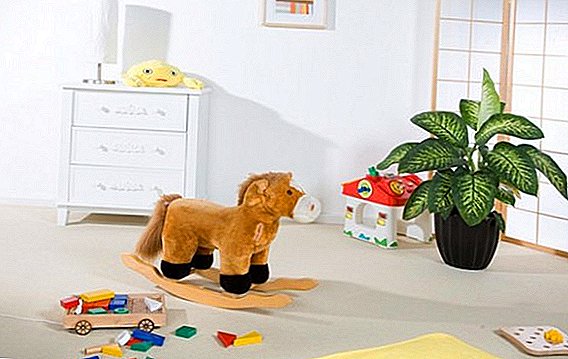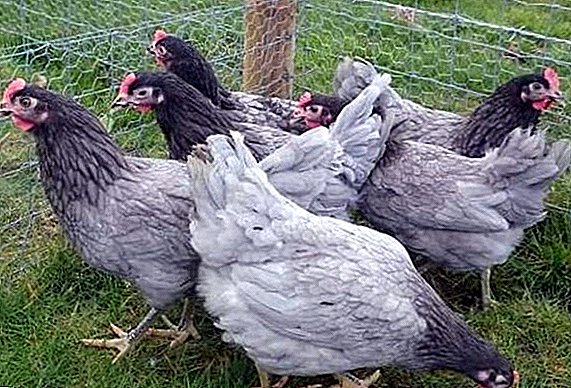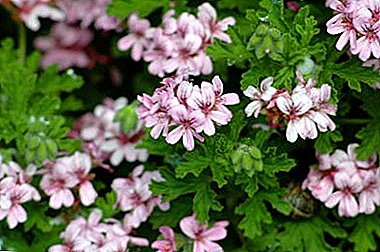 Houseplants outwardly and in biological characteristics can differ dramatically from each other, but the rules of their planting are about the same. Properly performed procedure helps not only to increase the productivity of plants, but also protects them from the development of diseases, and also prolongs their lifespan. What home flowers are better for picking up for your interior and how to plant them correctly, read below.
Houseplants outwardly and in biological characteristics can differ dramatically from each other, but the rules of their planting are about the same. Properly performed procedure helps not only to increase the productivity of plants, but also protects them from the development of diseases, and also prolongs their lifespan. What home flowers are better for picking up for your interior and how to plant them correctly, read below.
Basic rules for planting indoor plants
The main rule concerns high-quality disinfection:
- ground;
- landing capacity;
- plant roots or seeds.
 For breeding, cuttings of 7-10 cm in height with several points of growth are suitable. It is better to buy seeds that are coated: such planting material is treated with disinfectants and growth accelerators, which reduces the time for preplant preparation.
For breeding, cuttings of 7-10 cm in height with several points of growth are suitable. It is better to buy seeds that are coated: such planting material is treated with disinfectants and growth accelerators, which reduces the time for preplant preparation.Did you know? The most effective air purifier is aloe. The plant produces a large amount of oxygen at night, absorbing carbon dioxide, which helps to improve the well-being of the inhabitants of the house after sleep.
How to plant potted flowers in a pot
Before you plant a home plant, you need to familiarize yourself with the basic rules for selecting reservoirs, preparing the soil substrate, and organizing microclimatic conditions.
Having received healthy cuttings or separating children, you need to arrange a two-hour bath in the solution of Fitosporin (10 g / 5 l of water). Cacti are planted directly into the ground, and the cuttings are placed in water and await the formation of the root system.
Which pots are better to plant
When planting in the first place you need to find a suitable capacity. Regardless of the type of plant, the new pot should always be 2 cm larger than the previous one in height and diameter. It is also necessary to focus on the size of the root system: a distance of 2-3 cm should be maintained from the root to the wall and the bottom of the pot. the soil, and in too large, they will redirect all forces to beading the roots of an earthy coma and developing green mass. Both in the first and in the second flowering case it is very difficult to wait. For young saplings, small containers with a height of 5-10 cm and a diameter of 5 cm are suitable. For sowing seeds, it is better to take general oblong containers 10 cm high and 15 to 30 cm long.
 The material from which the container is made must protect the root system well, be plastic, in order to allow free removal of the flower. Best made containers made of plastic. Clay pots look beautiful, but in summer they overheat and overcool in winter. Regarding the form you need to focus on the place of cultivation:
The material from which the container is made must protect the root system well, be plastic, in order to allow free removal of the flower. Best made containers made of plastic. Clay pots look beautiful, but in summer they overheat and overcool in winter. Regarding the form you need to focus on the place of cultivation:
- for open terraces and balconies it is better to take pots;
- for an apartment / house it is better to give preference to standard pots and containers.
Important! Only transparent containers are suitable for epiphytes: otherwise the root system will not be able to participate in the process of photosynthesis, and the plant will die.
Soil preparation
The soil for plants should be:
- nutritional;
- breathable;
- loose;
- moisture-carrying
The easiest option is to buy the appropriate soil, adapted to the specific type of plant, in the store. When preparing the soil yourself, you should take into account the type of plants and the conditions of their natural growth. Epiphytes require substrates consisting mainly of tree bark with the addition of charcoal and sphagnum moss. For all other soils most often make up from:
- leaf-sod soil - it can be taken in the near forest;
- peat;
- coarse sand.
 These are the 3 main elements that are mixed in a 1: 1: 1 ratio. You can add 5-10% to them:
These are the 3 main elements that are mixed in a 1: 1: 1 ratio. You can add 5-10% to them:- perlite;
- vermiculite;
- sphagnum moss;
- wood ash;
- crushed foam.
You can combine all these elements or choose one of them.
Video: How to choose a primer for indoor plants Disinfect the soil in several ways:
- To ignite in the oven at a temperature of + 100 ° C.
- Spill hot solution of ash. 400 grams of ash are added to 10 liters of water, boiled for 15 minutes, poured hot into the soil and mixed.
- Spill hot solution "Furatsilina" - put 1 tablet per 100 ml of boiling water. The same composition can be processed and the pot.
- Use a hot solution of potassium permanganate - 1 g of substance is taken for 1 l of boiling water.
- To fertilize the soil with “Fitosporin” - 5 g of the powder is dissolved in 10 l of water, watering the soil is carried out a week before planting.
Soil moisture before planting should be in the range of 50-60%. If the soil is dry, then a few hours before planting it must be watered with clean water, the temperature of which is + 30 ° C.
Ensuring optimal conditions
The optimal microclimate is very important for plants after transplantation. They need to adapt to the new soil, and reduced or elevated temperature, together with inappropriate humidity, can provoke root rot and the development of fungal diseases. 
Temperature
The optimum temperature for any flowers is from +18 to + 25 ° С. If it is planned to germinate seeds, then the optimal indicator varies within + 25 ... + 30 ° С.
Did you know? The roots of wild ficus can reach a length of 90 m. The longest roots were found in the South African representative - up to 120 m in depth.
Humidity
At the time of planting, the air humidity should vary within 75%.
Lighting
After transplantation, plants need diffused light and high-quality protection from direct sunlight. The optimal light day for domestic plants is 10-14 hours, depending on their origin. If sowing is done, then the lighting in the germination stage is not necessary. 
Planting a plant
The main stages of planting cuttings:
- Process the roots of the obtained planting material with a mixture of "Fundazol" and wood ash (1: 1).
- At the bottom of the pot, place a layer of expanded clay (1 cm).
- Lay nutrient soil on top of the drain, filling one third of the pot with it.
- In the central part form a small mound and place on it the root system of the seedling.
- Sprinkle voids with soil, while aligning the plant at the root neck. The soil should cover the root itself and a distance of about 0.5-1 cm above it.
- Lightly seal the soil, place the pot in a shaded place and cover it with a transparent cap that can be made from a plastic bottle. The lid of the neck must be removed to ensure that the ground part of the plant air access.
- After a week, remove the cap and move the plant to a permanent place.

When planting seeds, do the following:
- Prepare the tank, lay the drainage layer.
- Then fill the entire container with soil and spread the seeds on its surface at a distance of 5 cm from each other.
- After that, planting material is covered with a layer (1 cm) of soil or sand.
- The surface of the pot is covered with a transparent film or polyethylene.
- The container is set aside in a room with diffused light or completely darkened and awaiting seed germination.
- Before germination, plantings are ventilated daily for 15 minutes and, if necessary, moisten the soil with a spray bottle.
- After the sprouts appear, the shelter needs to be removed and installed in a well-lit place.
- They begin transplanting into individual containers with the appearance of 3-4 full sheets and when sprouts reach a height of 7-10 cm.
Important! On the germination of seeds of different types of plants can take from 7 days to 1.5-2 months.
Care for indoor plants
After planting, it is necessary to provide the plants with optimal care. Usually it does not constitute special difficulties and implies:
- the introduction of dressings in accordance with the stages of the growing season and the type of plants;
- soil moisture;
- timely transplant;
- formative and sanitary pruning.

Fertilizer
Top dressing is introduced throughout the entire phase of active vegetation, starting from the exit from the resting stage. When planting cuttings implies conducting the first feeding after the appearance of new sheets. Plants obtained from seeds, fertilized for the first time after the disclosure of 2 full sheets (not cotyledonous).
Familiarize with 11 means for top dressing of window plants.
At first, plants are fertilized with formulations containing growth accelerators - for example, Epin: 2-3 drops of the drug per 1 l of water are enough. The solution is sprayed on the ground part of the plants and the soil surface. The absorption of the drug by the plant body takes 2-3 days. It will be effective not only at the initial stage of growth, but also in situations where the plants have experienced stress (freezing, sunburn, treatment of diseases of the root system, etc.). You can make the drug every 10-14 days.
In the future, it is better to use products specially adapted for specific plants. Initially, the dosage is reduced by half from that indicated in the instructions, each time increasing it gradually so as not to burn the roots.
Video: Effective top dressing for indoor flowers From organic matter, universal ash is wood ash - it not only enriches the soil with nutrients, but also serves as a good defense against the development of fungal diseases and the spread of pests. It can be used in powder form, powdering the soil, or in solution (400 g / 10 l of water). The solution can be sprayed on the ground part of the plants and for irrigation.
Watering
Watering any representatives of the flora is carried out after drying of the top layer of soil. The only exceptions are succulents and cacti - they can be watered even in the heat once a month.
Watering can be carried out by introducing moisture along the edge of the pot so that water does not fall on the plants, or pour it into the pan. If moisture is introduced through the pan, then after 15 minutes, the excess water must be drained.  Moisture-loving specimens in the summer period must be sprayed every 2-3 days. After the manipulation it is necessary to make sure that the moisture does not get into the leaf outlet, otherwise the risk of leaf rot increases.
Moisture-loving specimens in the summer period must be sprayed every 2-3 days. After the manipulation it is necessary to make sure that the moisture does not get into the leaf outlet, otherwise the risk of leaf rot increases.
Water temperature for irrigation and spraying should correspond to the ambient temperature.
Pruning
Pruning should be in early spring. Specimens with a lush green mass are formed into 2 stalks, pinching a growth point in the first year. Also come the next year, pinching the points of growth on 2 formed shoots.
Also, plants periodically need sanitary pruning, which is carried out as needed at any time of the year. It implies the removal of:
- flowered buds;
- extra shoots;
- dried or mechanically damaged shoots;
- dead leaves;
- subsidiaries for further reproduction (cacti, succulents, epiphytes).
 All manipulations must be carried out with gloves using a clean, disinfected instrument. For cutting you can use sharp sharpened scissors or a secateur of suitable size.
All manipulations must be carried out with gloves using a clean, disinfected instrument. For cutting you can use sharp sharpened scissors or a secateur of suitable size.Transfer
First you need to figure out exactly when the flower needs to be transplanted. There are 2 types of transplanting, which are carried out depending on the state of the plants and the growing season:
- urgent - such works include transplantation after purchase, in the presence of diseases, rotting of the roots, an excess of moisture in the soil, as well as with a strong depletion of the soil;
- planned - is carried out most often in 2-3 weeks before leaving the state of rest in early spring.
Important! Transplant after purchase is carried out strictly in a month. - That is exactly what plants need to adapt to new conditions. If the plant is in the flowering phase, then the transplant after the purchase is not carried out until all the buds fall.
Planned picking is carried out depending on age. Young specimens are transplanted annually, preferably at the same time. For instances that have reached the age of 3-5 years, this procedure can be carried out once every 2-3 years. During periods when transplantation is not carried out, you need to remove the top 2-5 cm of soil, depending on the type of root system, and replace it with a new nutrient substrate.  Transplantation is carried out by the transshipment method with preservation of the earth coma. To simplify the task a few hours before transplanting, you can water the plants if necessary. After removing the plant from the pot, the root system is inspected. The dried ends are removed, and the cuts are processed with a mixture of "Fundazole" with wood ash.
Transplantation is carried out by the transshipment method with preservation of the earth coma. To simplify the task a few hours before transplanting, you can water the plants if necessary. After removing the plant from the pot, the root system is inspected. The dried ends are removed, and the cuts are processed with a mixture of "Fundazole" with wood ash.
Learn how to properly transplant indoor plants.
If there are lesions of the root system or the ground is too depleted, then the earth one needs to be removed. First, the soil is carefully separated by hand, then the roots are washed under running water. The damaged parts of the root system are removed and treated with "Fundazole" with ashes.
Common mistakes
The main mistakes during planting / transplanting and care:
- too deep landing;
- attempts to pull out or pick out a sharp object of a plant from an earthen coma;
- poor treatment of the soil and the pot before planting;
- wrong selection of tank size;
- non-compliance with the rules concerning the adaptation period after transplantation;
- plentiful watering immediately after planting - it is permissible to spray the soil from the spray gun, and full watering should be started only after a week in small portions;
- neglect of the rules concerning the organization of the drainage system - insufficient number of drainage holes in the bottom, too small clay.
What flowers can not be planted at home
Picking flowers for home cultivation, it is worthwhile to approach this issue from a scientific point of view. Some of the representatives of the flora can be poisonous, are allergens, exude a suffocating odor.  All types of Euphorbia are poisonous. When cracking stems or leaves, they emit white “milk”, which, when exposed to open skin, causes an allergic reaction, accompanied by flushing, itching, pinching.
All types of Euphorbia are poisonous. When cracking stems or leaves, they emit white “milk”, which, when exposed to open skin, causes an allergic reaction, accompanied by flushing, itching, pinching.
It is also worth being careful with cacti that have a lot of sharp spines - they should be kept out of the reach of children.
Allergen plants include:
- ferns;
- cyclamens;
- rhododendrons;
- geraniums;
- pelargonium.
Useful tips for beginners
Here are some useful recommendations for novice florists:
- Be careful when choosing flowers for your home, especially if you have children or pets. Learn all the features of a particular instance, its pros and cons. Also appreciate the possibility of organizing optimal microclimate conditions.
- For planting use fresh nutrient soil, compiled in accordance with the biological characteristics of plants.
- Having brought a new representative of flora home, do not put it immediately next to the already existing specimens - in the substrate and on the plant itself there may be spores of fungi and pests that are invisible to the naked eye.
- When the first symptoms of disease and pest damage are detected, the infected specimen should be removed to another room, appropriate procedures should be carried out to eliminate the problem, and all healthy flowers should be treated with prophylactic agents.
Did you know? The plant velvichiya mirabilis has only 2 leaves. Their number does not change even with the aging of plants, whose age in the wild can reach up to 100 years.
Proper planting of home representatives of the flora is a determining factor in maintaining a consistently high resistance of the plant organism to diseases and pests. The main task of the grower is to adhere to the elementary rules of agricultural engineering.


